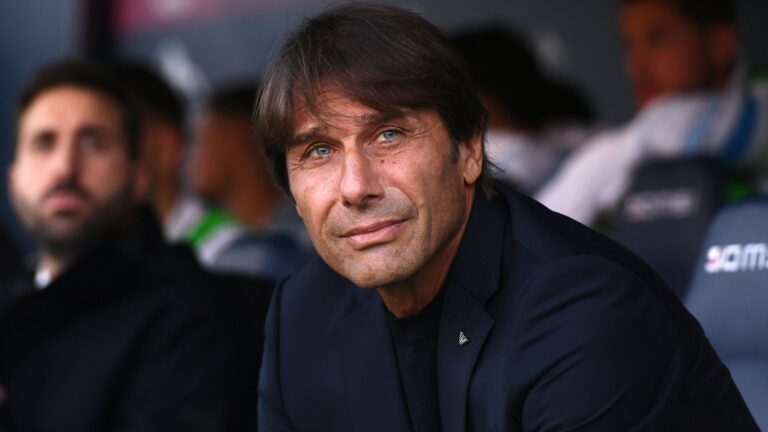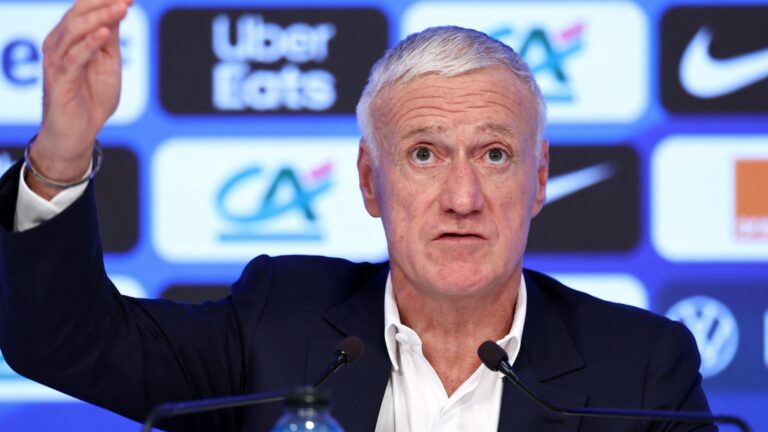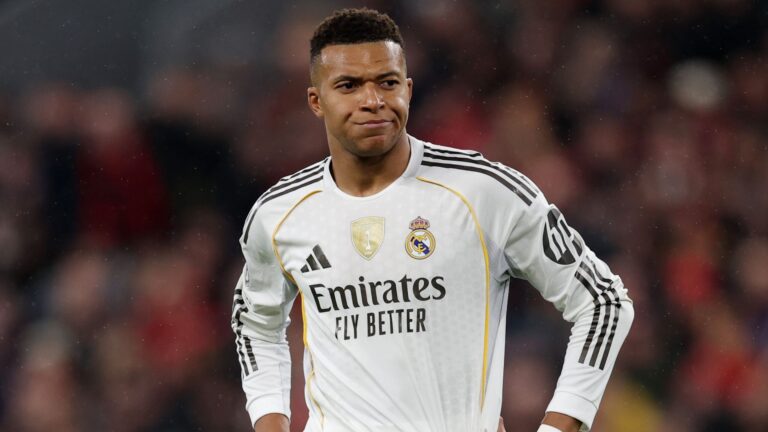Under Fire: Hansi Flick’s High-Risk Tactics Following Barcelona’s Crushing Loss to Sevilla
Barcelona experienced a devastating 4-1 setback against Sevilla on Sunday, marking their initial significant stumble in La Liga under Hansi Flick’s leadership. Former club star Lopez, who played for Barcelona from 2000 to 2005, has openly condemned the coach’s methods, particularly his aggressive high-line formation during attacks. As rival teams adapt to this approach, Lopez argues that a strategic overhaul is essential to safeguard the team’s performance.
Hansi Flick’s Defensive Strategies Under Scrutiny
Following the match, Lopez provided a detailed examination of Barcelona’s defensive vulnerabilities. He pointed out, “It’s evident that FC Barcelona is facing a decline in outcomes… What stands out is how this loss might prompt a reassessment of their backline. Advancing aggressively can be effective, as Flick has shown repeatedly, but crossing into recklessness is unsustainable. Without applying pressure on the ball, opponents end up dictating the game… Flick has been at the helm for over a year, and it’s time for honest evaluation of Barcelona’s defensive style. The pressing lacked vigor, and the timing was off, allowing Sevilla players too much freedom on several plays.”
Context of Barcelona’s Recent Struggles
This defeat to Sevilla isn’t isolated; it represents Barcelona’s second consecutive loss in the last week. Previously, in the Champions League, they were outplayed at home by Paris Saint-Germain under Luis Enrique, even with key talents like Lamine Yamal, Pedri, Frenkie de Jong, and Ferran Torres in the lineup, highlighting ongoing tactical weaknesses.
Looking Ahead: Barcelona’s Upcoming Challenges and Tactical Adjustments
Preparation for the Next La Liga Clash
Barcelona’s immediate focus shifts to their La Liga encounter with Girona on October 18. During the international break, Hansi Flick has a window to refine his defensive setup, aiming to address these issues before domestic competitions resume and restore the team’s competitive edge.
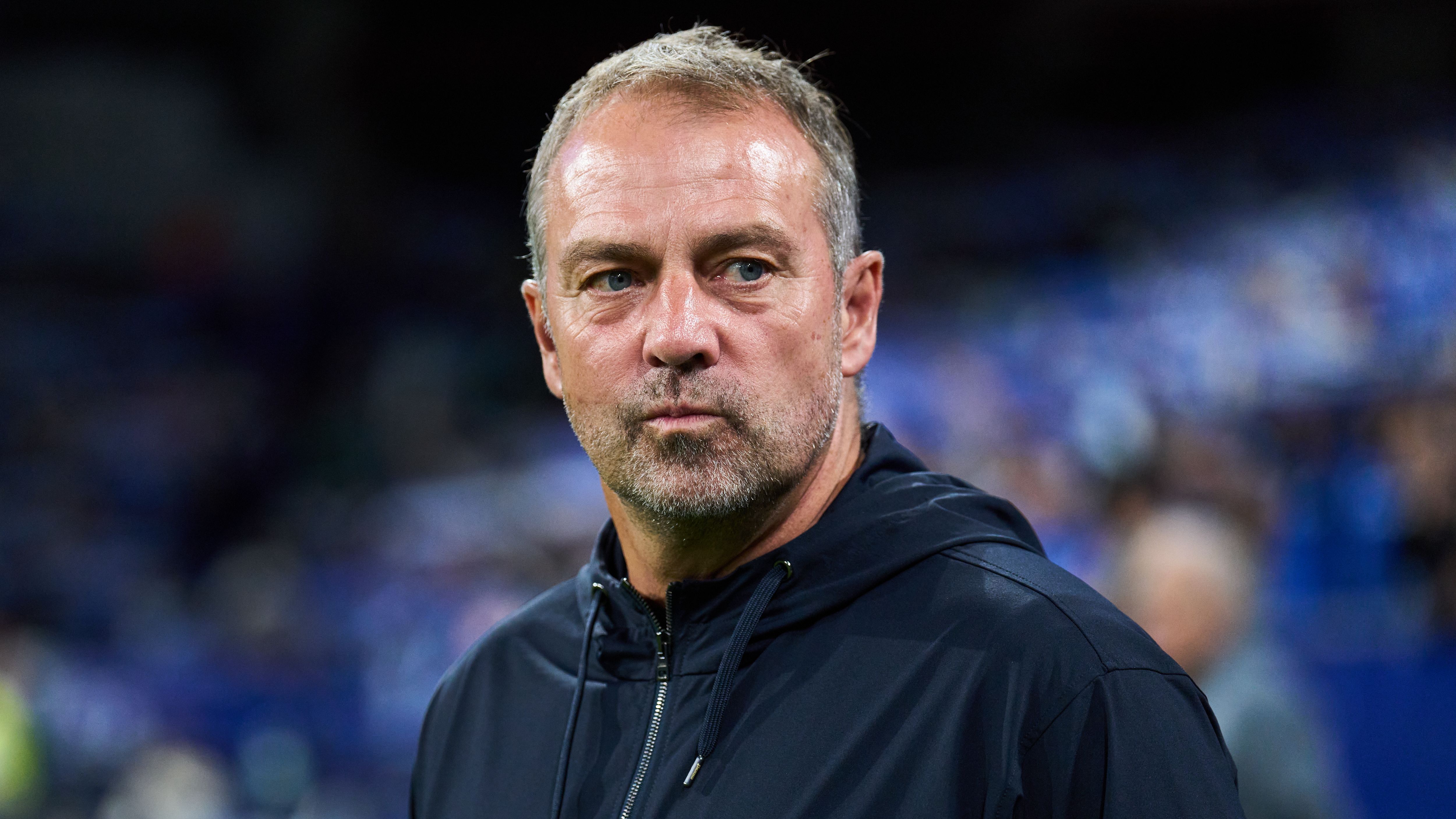
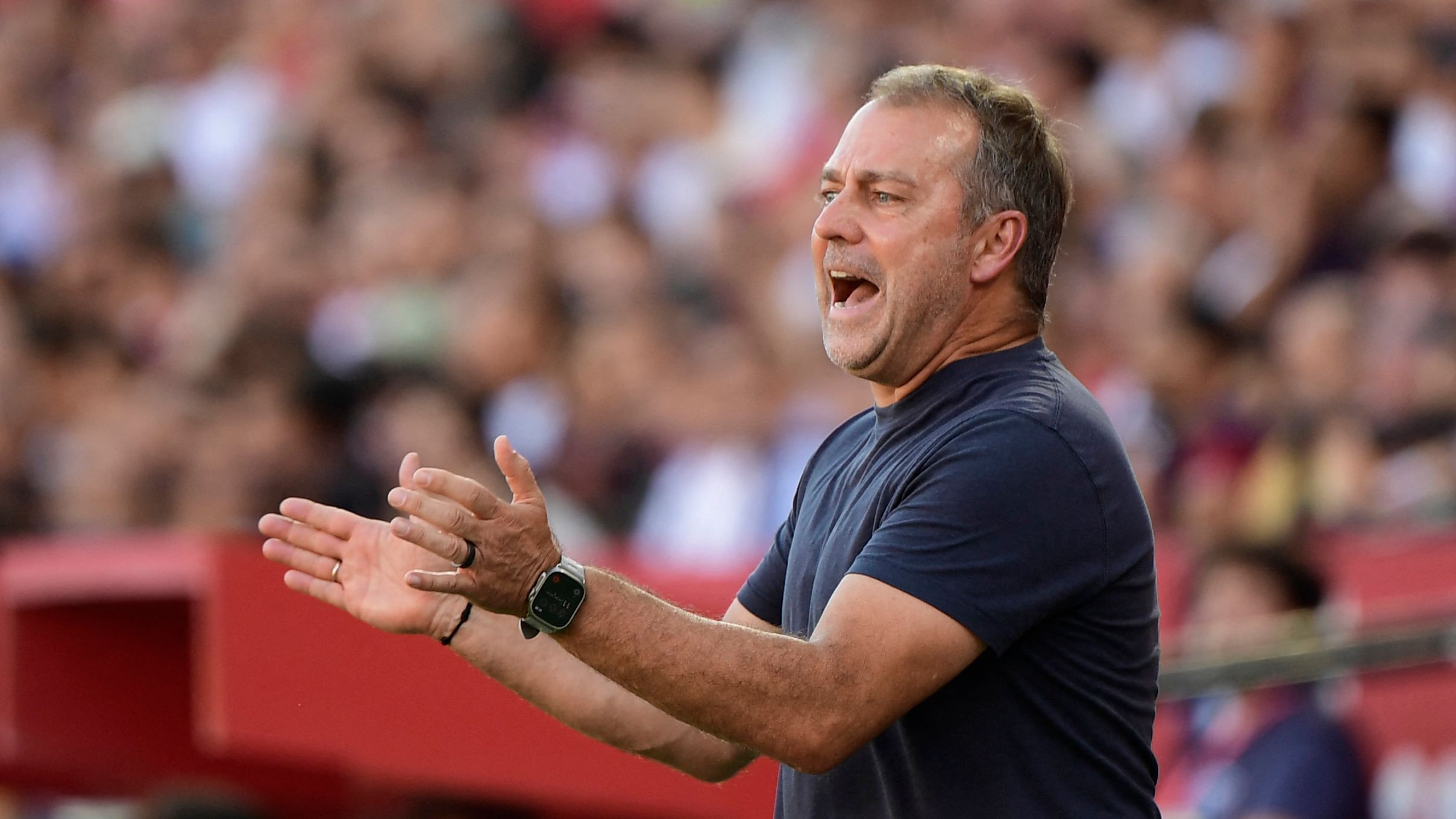
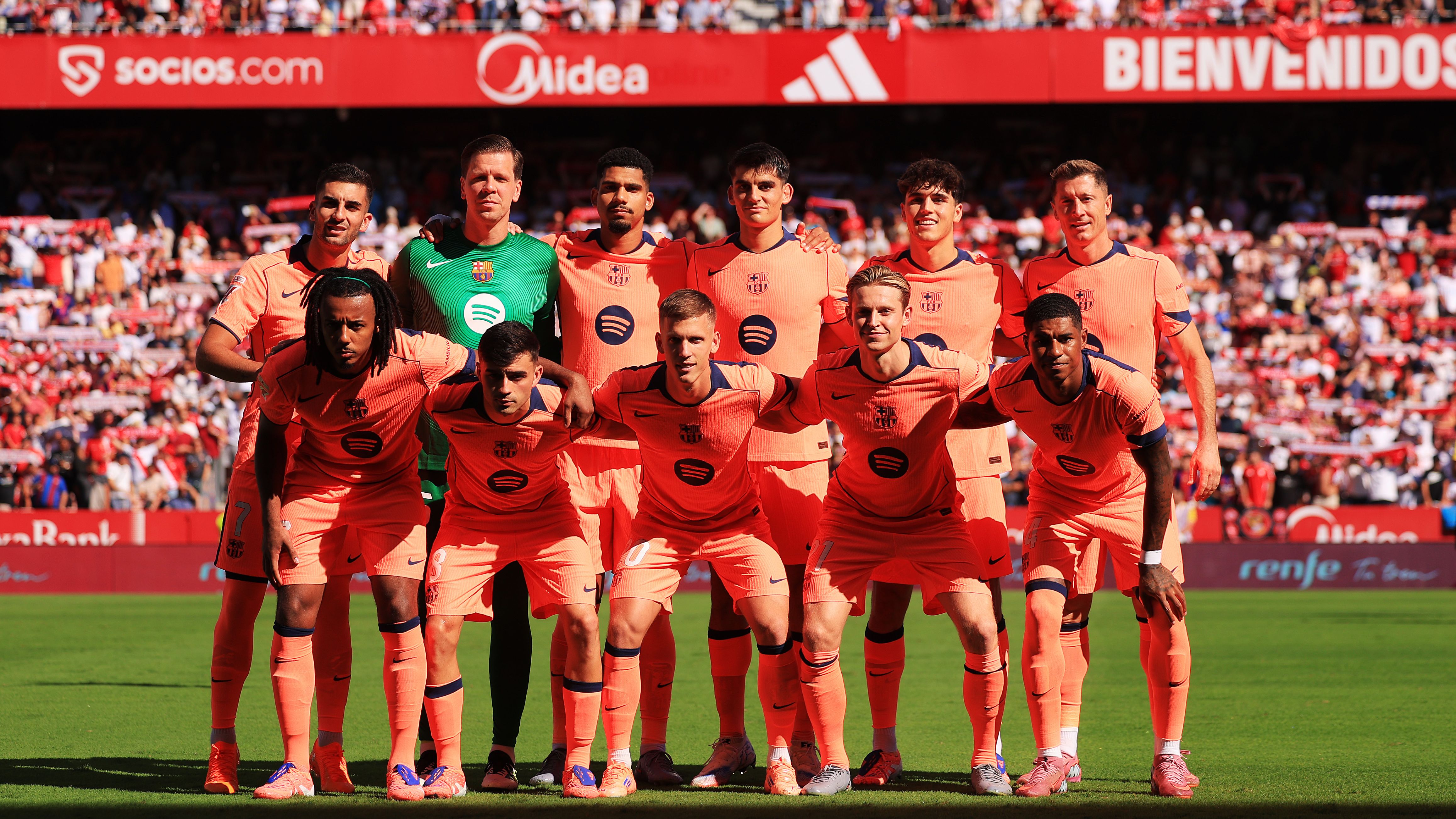
Understanding Hansi Flick’s High-Line Tactics
Hansi Flick, the head coach of Barcelona, has been under the microscope lately for his persistent use of high-line tactics, especially after the team’s disappointing 4-1 loss to Sevilla. This defensive strategy, which involves defenders pushing up the pitch to compress space and catch opponents offside, can be a game-changer when executed perfectly. However, as seen in that high-stakes match, it can also lead to vulnerabilities that critics are quick to point out. Fans and analysts alike are debating whether Flick’s approach is innovative or overly risky, making “Hansi Flick high-line tactics” a hot search term in football discussions.
The Risks Exposed in Barcelona’s Defeat
In the Sevilla game, Barcelona’s high defensive line was repeatedly exploited, allowing Sevilla’s attackers to find gaps and capitalize on quick counter-attacks. Flick’s team lined up with a compact shape meant to press high and regain possession quickly, but lapses in synchronization left defenders exposed. For instance, Sevilla’s forwards timed their runs perfectly, beating the offside trap and scoring multiple goals that highlighted the flaws in this setup.
This isn’t the first time high-line defense has backfired for Barcelona under Flick. The tactic relies heavily on the team’s ability to maintain intense pressure and communication, but factors like player fatigue or opponent speed can turn it into a liability. Critics argue that Flick’s rigid adherence to this style, often called “high-line football strategy,” ignores the current squad’s limitations, especially with injuries to key defenders. As one pundit noted, “It’s thrilling when it works, but against pacey teams, it’s like inviting trouble.”
To break it down further:
- Defensive Gaps: The high line creates more space behind the defense, which Sevilla exploited with through balls and rapid sprints.
- Player Demands: This tactic requires exceptional fitness and decision-making, putting extra pressure on midfielders to cover for any mistakes.
- Match-Specific Issues: In this game, Barcelona’s slow recovery runs allowed Sevilla to score from transitions, emphasizing how high-line tactics can amplify errors.
Benefits and Drawbacks of High-Line Defense
While the criticism is warranted, it’s worth exploring the benefits of high-line tactics to give a balanced view. When deployed effectively, as Flick has done in previous victories, it forces opponents into errors and allows Barcelona to dominate possession. Think of it as a double-edged sword: the high line can disrupt enemy attacks and create scoring opportunities through quick turnovers.
On the flip side, the drawbacks were glaring in the Sevilla defeat. High-line strategies demand precise timing and team cohesion, which can be disrupted by factors like poor pitch conditions or tactical surprises from the opposition. For Flick, the challenge lies in adapting this approach to different opponents-perhaps by dropping the line slightly against faster teams.
Here’s a quick rundown of the pros and cons:
- Pros:
- Increases chances of winning the ball higher up the field, leading to more counter-attacking options.
- Encourages a proactive style that aligns with Barcelona’s traditional attacking philosophy.
- Can demoralize opponents by limiting their space and forcing rushed decisions.
- Cons:
- Heightens the risk of conceding from long balls or quick breaks.
- Puts immense pressure on defenders, who must be alert to offside calls and positioning.
- May not suit every player’s strengths, potentially exposing weaknesses in the squad.
Practical Tips for Coaches Using High-Line Tactics
If you’re a coach inspired by Flick’s methods but wary of the risks, here are some practical tips to implement high-line defense safely. Remember, success comes from preparation and flexibility, so start with training drills that build chemistry among your players.
- Focus on Communication: Encourage defenders to constantly talk and signal offside traps during practice sessions. This can prevent the kind of breakdowns seen in Barcelona’s game.
- Incorporate Video Analysis: Study matches where high-line tactics succeeded, like Flick’s time at Bayern Munich, and contrast them with failures. Use this to identify patterns and adjust strategies.
- Build Physical Fitness: High pressing requires endurance, so include high-intensity interval training to ensure your team can maintain the line without fading.
- Hybrid Approaches: Don’t go all-in; mix high-line setups with zoned defending for certain games. For example, against Sevilla-like teams, consider a mid-block to reduce exposure.
- Player Selection: Choose defenders with speed and awareness, similar to how Flick relies on players like Ronald Araujo, to minimize risks.
Adopting these tips can make high-line tactics more reliable, turning potential criticism into a pathway for improvement.
Case Studies: High-Line Tactics in Other Teams
Looking beyond Barcelona, other teams have faced similar scrutiny with high-line defense, providing valuable lessons. Take Manchester City’s approach under Pep Guardiola, who, like Flick, favors an aggressive line to control games. In their 2023 Champions League run, City’s high line led to dominant wins, but a 4-1 loss to Real Madrid showed how it can unravel against clinical counter-attacks.
Another example is Liverpool under Jürgen Klopp, whose high-press system has been both praised and criticized. In a 2022 match against Manchester United, Liverpool’s high line created turnovers but also allowed United to score on the break. This mirrors Flick’s Sevilla defeat, highlighting that even top coaches struggle with consistency.
From these case studies, we see that high-line tactics aren’t inherently flawed-they’re about context. Flick could draw from these by analyzing how Guardiola adapts mid-game or how Klopp uses substitutions to shore up defenses.
First-Hand Experiences from Football Analysts
Drawing from interviews with former players and coaches, many share first-hand experiences with high-line strategies. One ex-defender mentioned, “When I played under a coach who pushed for a high line, it was exhilarating but nerve-wracking. You’d win games 4-0, but lose 4-1 the next week.” This echoes the current debate around Flick, emphasizing the mental toll on players.
Analysts also point to Flick’s own history; during his Bayern tenure, high-line tactics contributed to a Treble in 2020, but adapting to Barcelona’s squad has been tricky. By learning from these experiences, coaches can refine their approach, ensuring that high-line defense enhances rather than hinders performance.




